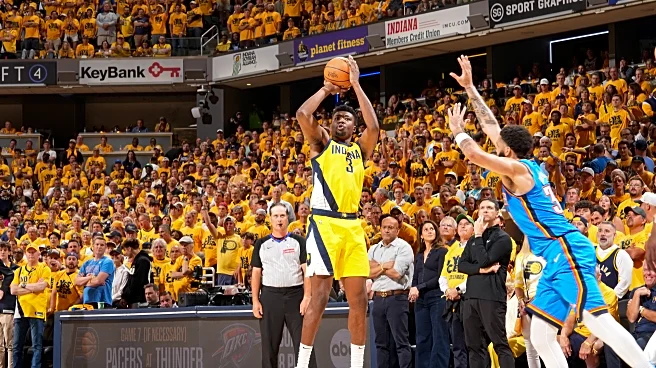What's Happening?
Marketplace Mall, located in Henrietta, New York, opened on October 7, 1982, on land that was previously marshland and the site of Hylan Airport. The mall was developed by the Wilmot family, owners of Wilmorite, in collaboration with Ray Hylan, an aviation pioneer. At its inception, Marketplace Mall was the largest shopping mall between Long Island and Cleveland, featuring over 100 stores and expecting $110 million in sales during its first year. The original anchor stores included Sears, Sibley’s, McCurdy’s, and B. Forman, with JCPenney joining shortly after. Over the years, the mall has seen various changes, including the departure of Dick’s Sporting Goods and the transformation of the Sears site into the University of Rochester Medical Center’s Saunders Center for Orthopaedics & Physical Performance.
Why It's Important?
Marketplace Mall's development marked a significant economic milestone for the Henrietta area, providing a substantial boost to local commerce and employment. As one of the largest malls in the region, it attracted shoppers from across New York, contributing to the area's economic growth. However, the mall faced challenges in the mid-2000s due to market saturation and the rise of online shopping, which affected its profitability and led to the closure of several stores. The transformation of part of the mall into a medical facility reflects a shift in economic priorities and adaptation to changing consumer needs.
What's Next?
The future of Marketplace Mall may involve further diversification of its offerings to adapt to the evolving retail landscape. The integration of healthcare facilities within the mall suggests a trend towards mixed-use developments that combine retail, healthcare, and other services. This could potentially attract a different demographic and stabilize the mall's economic viability. Continued investment in such transformations may be necessary to ensure the mall remains relevant in the face of ongoing retail challenges.
Beyond the Headlines
The evolution of Marketplace Mall highlights broader trends in the retail industry, including the decline of traditional malls and the rise of mixed-use developments. This shift reflects changing consumer preferences and the need for malls to offer more than just shopping experiences. The adaptation of retail spaces to include healthcare and other services may become increasingly common as malls seek to remain competitive and meet community needs.













